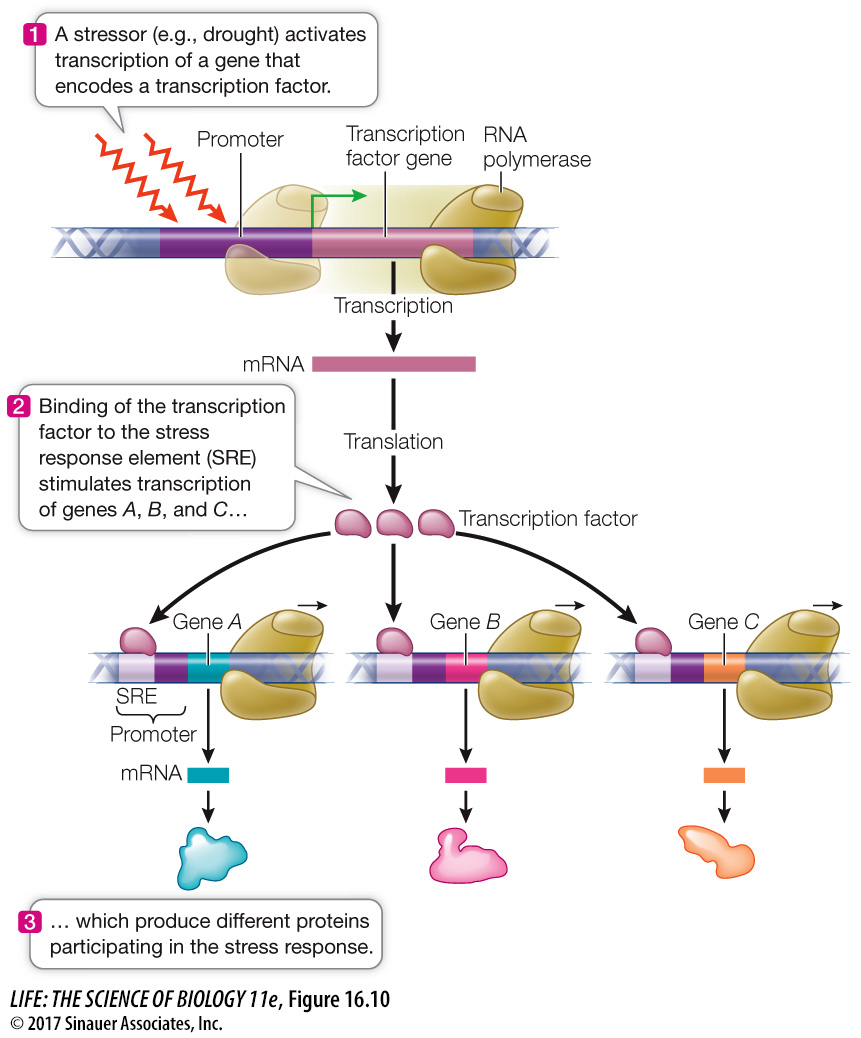The expression of sets of genes can be coordinately regulated by transcription factors
How do eukaryotic cells coordinate the regulation of several genes whose transcription must be turned on at the same time? Prokaryotes solve this problem by arranging multiple genes in an operon that is controlled by a single promoter, and by using sigma factors to recognize particular classes of promoters. Most eukaryotic genes have their own separate promoters, and genes that are coordinately regulated may be far apart. In these cases, the expression of genes can be coordinated if they share regulatory sequences that bind the same transcription factors.
Shared regulatory sequences enable organisms to respond to stress—plants, for example, use shared regulatory sequences to respond to drought. Under conditions of drought stress, a plant must simultaneously synthesize several proteins whose genes are scattered throughout the genome. To coordinate expression of the stress response, each of the associated genes has a specific regulatory sequence near its promoter called the stress response element (SRE). A transcription factor binds to this element and stimulates mRNA synthesis (Figure 16.10). The stress response proteins not only help the plant conserve water, but also protect the plant against excess salt in the soil and freezing. This finding has considerable importance for agriculture because crops are often grown under less than optimal conditions or are affected by weather.

Figure 16.10 Coordinating Gene Expression A single environmental signal, such as drought stress, causes the synthesis of a transcription factor that acts on many genes.
Page 345
